

The U.S. Environmental Protection Agency USEPA Landfill Technology Workshop will highlight the state of advancing technologies, including their ability to detect and quantify methane and discuss how these technologies might fit into a regulatory framework. SCS Engineers’ Phil Carrillo will participate in the workshop and experts Melissa Russo, Andy Sheppard, and David Greene will be available to answer questions.
Registration is closed, but if you were not able to register before the deadline, please contact Nan Albaladejo by email () or by phone (703-705-4438) to be registered manually (if space is available). Since the workshop appears fully booked, below are some resources regarding the proven and emerging landfill methane detection and measurement technology that could work for you and the challenges they help address.
Compounded by rising labor costs and regulations, the three major challenges for landfill owners and operators are mitigating toxins, liquids, and greenhouse gases. Landfills and solid waste operations across North America use drones and remote monitoring and control applications to optimize operations and address these major challenges, including surface emissions monitoring.
Combine sensors with SCS drone-based technologies to monitor landfill gas (LFG) emissions and detect leaks, eliminating a significant portion of the manual effort from quarterly compliance while performing operations more safely and accurately. Captured emissions data is useful for optimizing well fields, tackling odor issues, and quantifying emissions for renewable natural gas projects.
In the videos below and USEPA Landfill Technology Workshop, a 2-day meeting sponsored by the agency focuses on developing (and benefits associated with) advanced methane monitoring technologies applied to landfill monitoring. SCS Engineers expert Phil Carrillo will participate in the Technology Panel Discussion, and expert Melissa Russo will attend and be available to answer questions.
USEPA Landfill Technology Workshop covers these topics as follows,
Free, on-demand video resources
Drones, sensors, LiDAR, weather, and IoT, our landfill technology experts demonstrate how technologies work together to investigate gas collection and control systems (GCCS), liquids, airspace, stormwater, weather, wellheads, flares, pumps, temperature, and other equipment. Technology can help reduce labor and reaction time by automating what once took many hands in the field.
Video: 2024 Landfill, RNG, and Compost Monitoring Technologies Based on successful client installations, the SCS RMC team shows how landfill and facility owners/operators can respond in hours to satellite imagery of methane plumes, adjust operations to control odors based on weather conditions and collect methane emissions data in a fraction of the time it takes with traditional ground monitoring.
Video: Optimizing Landfill Technologies for Greater Efficiencies Part 1. Using drones and GIS integration for managing landfill gases and liquids. These combinations of technologies can even help you see underground conditions. It’s like having x-ray vision to manage GCCS and support leachate management while maximizing well-field pull.
Video: Optimizing Landfill Technologies for Greater Efficiencies Part 2. Panelists explain which technology is best for what and when integrating these technologies better serves your purpose and budget.
Website: USEPA Landfill Methane Outreach Program (LMOP)
Website: SCS Remote Monitoring and Control®, SCS RMC®
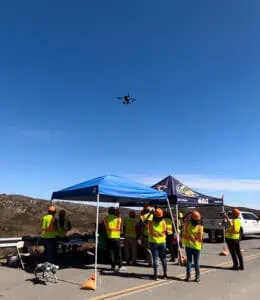
Orange County Waste & Recycling (OCWR) hosted a landfill tour showcasing technologies used at the Frank R. Bowerman Landfill as part of the August California Resource Recovery Association (CRRA) Conference & Trade Show. SCS’s Remote Monitoring & Control (SCS RMC) demonstrated advanced technology that protects neighboring communities, workers, and the environment from methane naturally produced as waste decomposes.
Landfills use complex systems to achieve the appropriate balance and tuning of the gas collection and control system (GCCS) at a sufficient extraction rate. The rate optimizes the effectiveness and efficiency of the GCCS to minimize fugitive LFG emissions while simultaneously preventing air intrusion caused by overdrawing wells. The collection and control process minimizes the migration of subsurface gas and odors while operating in accordance with federal, state, and local air quality regulations and air quality permit requirements.
Each landfill is unique, but these new technologies can also help protect a landfill’s bottom liner and final cover systems by controlling the accumulation of pressure due to the presence of LFG within the waste mass. Landfills collecting LFG as fuel for a landfill gas-to-energy facility or renewable natural gas plant can better maintain high gas quality. Where applicable, the technologies can help remove heat to contain and manage subsurface reactions in elevated-temperature landfills.
At the OCWR Landfill Tour, there was much to monitor and measure, including operational parameters such as pressure, temperature, gas composition, flow rate, and liquid levels at individual wells. Collecting this information at each well is time-consuming, expensive, and sometimes difficult to collect on foot. SCS RMC demonstrated the evolution of technologies enabling continuous and remote collection and measuring multiple parameters in real-time with automated wells.

Evelyn Martinez scanned the demonstration area for LFG using a drone, demonstrating how drones quickly collect methane data to detect anomalies. A monitor displayed real-time drone data collection, and a second monitor showed real-time flare station data and past methane drone scans of the landfill.
Omar Rodriguez and Marco Quen demonstrated handheld methane detection instruments using optical, thermal, and other sensors and how automated wellheads utilize in-line sensor technology and do not require pulling a gas sample into an analyzer sensor. There was also an odor monitoring and reporting station, and the technology guru Phil Carrillo brought his robodog.
About OCWR
OCWR manages one of the nation’s premier solid waste disposal systems, serving residents and businesses in the County’s 34 cities and unincorporated areas. The three active landfills, including the Frank R Bowerman Landfill, reflect environmental engineering at its best and are among the largest in the state – annually receiving more than 4 million tons of solid waste.

These state-of-the-art facilities take pride in being good neighbors. The landfills use sanitary and environmentally friendly operational methods and advanced technologies that have earned them multiple awards for their modern management techniques, regulatory compliance, and environmental practices, including noise reduction and visual screening techniques, natural habitat planting and re-seeding, the use of falcons and hawks to reduce the number of scavenger birds, and weed abatement provided by real goats.
OCWR currently operates greeneries in Irvine, San Juan Capistrano, and Brea. The full-circle recycling program starts with curbside residential collection of green and organic waste transformed into high-quality compost and mulch and returned to the community as a free resource to enrich gardens and landscaping. Composting helps reduce greenhouse gasses and preserves future landfill capacity.
OCWR’s Renewable Energy Program manages the beneficial reuse of landfill gas through power-generation partnerships that produce 380,000 megawatt-hours of electricity annually.
The SCS RMC team sends thanks to OCWR for helping to educate the public, agencies, and the waste management industry on the benefits and uses of modern landfill technology at work!
Landfill Technology Resources:
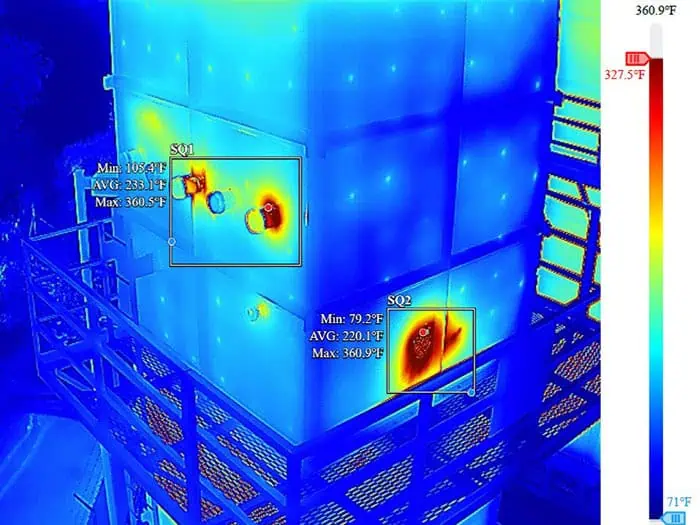
Thermal inspections are a key component of maintenance programs because they help extend your flares’ lifespan and help avoid asset failure that causes downtime or non-compliance. These industrial inspections are now safer, more precise, and more reliable.

Non-invasive Thermal Inspections
By integrating high-resolution thermal imaging, SCS drones inspect flares from a safe distance, eliminating the need for direct human interaction with potentially hazardous environments. The method is particularly efficient in industrial applications, such as detecting heat leaks, finding electrical problems, inspecting equipment, and monitoring temperatures in hard-to-access locations.
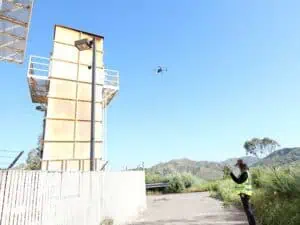
Industries reliant on flare systems, including oil and gas, chemical manufacturing, and landfills, can expect service that integrates seamlessly into existing operations, supported by a team of experts dedicated to excellence.
Additional Resources, Videos, and Articles:
David Hostetter from SCS Engineers and Dennis Siegel from WM (Waste Management) join Inductive Automation to talk about the unique processes and challenges within the waste management industry, from residential to the engineering and life cycles of landfills. They discuss how operational improvements in this essential service and its environmental footprint are making the industry more sustainable. They dive into the 24/7 maintenance and monitoring of landfills, adjusting to changing conditions in real-time, reducing cost, generating renewable energy, improving the health and safety of operators, and being proactive in a changing world. These landfill systems, such as WM’s Connected Landfills are improving connectivity, mobility, and visualization by using data science to facilitate better decisions.
Visit the SCS RMC site. Learn more about Sustainability in Waste Management.

Great innovations take shape when people with shared ambitions, high energy, and creative juices pool their talents and gusto. Meet two professionals at SCS Engineers, who, through their mutual entrepreneurial spirits, found a resourceful way to create landfill efficiencies for operators — saving time and money. Here’s the story of Chris Carver and Joy Stephens — and a service they helped develop, leveraging cutting-edge technology that’s been a game changer for landfill efficiency.
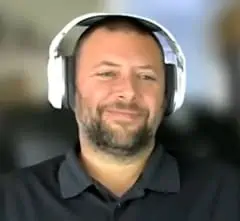
Chris Carver joined SCS Engineers soon after coming out of the military, where he served as an infantry soldier, protecting our country from threats on the ground. Brand new to landfill operations, the now 17-year SCS veteran started out dropping pipes and installing gas collection and control system (GCCS) components.
“But I was hungry to know how all the pieces fit together. I wanted to understand what made these complex systems work and everything they could do,” Carver recalls.
The more he asked, the more he learned, and with that knowledge came new opportunities. He climbed from laborer to field technician to landfill project manager. And, finally, to tech guru, building and managing powerful databases.
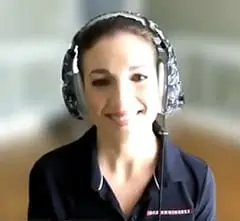
Not long after he’d moved into the IT space, Carver met Joy Stephens; a teacher turned environmental scientist who also did some data processing. They would enter a working relationship about shared learning and feed on each other’s curiosity and knowledge. Their synergy would play a key role in SCS’s GIS services integration with SCS RMC®. By leveraging GIS technology, the duo created site-specific, detailed digital maps that enable operators to visualize what’s happening in the field in real-time. Landfill and environmental staff are continually informed, allowing immediate action when needed. The operation is supporting about 117 patrons around the country and growing quickly.
Carver and Stephens met while working at a Tennessee landfill.
He oversaw field operations, monitoring and managing liquid levels, gas extraction wells, and surface emissions. And he was facilitating the transition to a digital platform to manage and use the field data better.
Stephens processed the data and helped him prepare operations, monitoring, and maintenance reports, which Carver used to identify trends and determine how to improve field operations. She generated those reports mainly from the field tech’s handwritten notes in those days.
In between their office dialogues, Stephens would follow him into the field, curious to see how he and the landfill techs worked.
“We began talking about how we could collect more and different types of data and use it to make the field techs’ and operators’ jobs easier while boosting their efficiency,” she says.
Plenty has transpired since those early conversations, and they continue to take their work further, dedicated now to SCS’s GIS Services, launched under the company’s Remote Monitoring Control Group.
Today, Carver and Stephens make digital forms and maps –Self-Monitoring Analysis and Reporting Technology (aka SMART)—the smartest they can be.
As the system grows in sophistication, clients tap into more information, in more detail, on GCCS, liquid management, and other landfill operations.
Stephens’ bailiwick is creating the smart forms field techs fill out from an app and upload to the cloud, replacing those cumbersome logbooks they used to lug, then bring to her. She also designs maps that connect to and pull information from the forms to visualize the information. She’s a mavin at capturing specific data points that operators look for and formatting the maps to deliver easy-to-read visuals of a lot of information.
Carver’s job is to manage the behind-the-scenes workings of the software to ensure the smart forms and maps perform as designed. There’s a lot of organizing and processing that goes on.
It requires fluency in multiple programming languages to customize functionality for each client. He may need to build in constraints and immediately visible liquid level calculations, write scripts to pull meteorological data from a weather station into a smart form, or script to automate tedious tasks such as parsing temperature probe data.
Stepping back in time, Carver says, “When Joy and I started working together, I was the Google maps guy. I incorporated data in Google maps to guide the field techs to the site locations needing their attention. Then Joy said, have you heard of GIS?”
It was more sophisticated. It could pick up on site-specific details that Google maps couldn’t.
“She showed me how the mapping and visualization worked. We could see liquid column heights in gas wells, fluctuating gas quality, and other actionable details. We would actually be able to monitor the overall health of each well and multiple other operations. I fell in love with it,” Carver says.
That’s when Stephens began creating maps connecting to the digital forms she’d been developing, allowing Carver to identify where to focus quickly.
“It helped me increase efficiency in the field, and our projects gained traction,” he says.
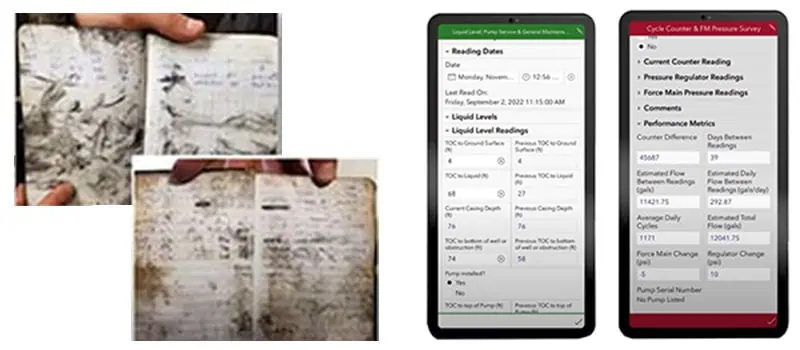
Stephens, like Carver, continually seeks to know more.
“In those early days when I went out in the field with Chris, I’d ask a ton of questions to understand better what information to capture and incorporate into the forms. Why are we monitoring this? What constitutes good gas quality? Why is it important to know liquid levels?” Stephens reflects.
They were the same questions Carver had asked years before, and he was impressed.
“I wanted a smart, curious partner who would move things along. And that is Joy,” says the equally curious and ambitious techie who taught himself how to code when building a website for his son’s baseball team.
As colleagues and friends, they have taken GIS capabilities beyond monitoring and analyzing field conditions. Now the system connects to IoT technology, enabling operators to take action remotely, whether increasing or reducing gas flow or turning dewatering pumps on or off, among measures.
They have mastered another skill set to capture and layer in more data. They’ve become drone pilots, flying unmanned aircraft over landfills to record methane emissions-related information from locations hard or unsafe to reach by foot.
As co-pilots, they share another interest beyond teaching, learning, and making technology do what they want.
It’s a time to experience their mutual affinity for the outdoors, take in their surroundings, and reassert that what they do is more than worthwhile.

“The top deck of the landfill, where Joy and I do our drone flights, is one of the most beautiful places. Depending on the part of the country, you see the woodland and mountains for miles. And get spectacular views of the town,” Carver says.
Stephens recalls an especially memorable flight on the East Coast getting methane emissions readings.
“We were gazing upward, and a pair of bald eagles on the landfill were soaring above us. It was one of those moments where we just looked at each other in awe.”
Later they talked about how that moment reminded them of what they do and why they do it.
“There is this incredible world around us. In responsibly managing landfills, with their important role in keeping communities clean and capturing climate-impacting methane, we help to preserve that world,” Stephens says.
Carver chimes in: “I think sometimes people lose sight of the fact that when we are gone, we leave this planet to our kids. Whatever we can do to improve it for them and their kids … that’s a good motivator for me.”
Click to learn more about
Click to learn more about environmental careers at SCS Engineers.
Join SCS’s next educational forum on remote monitoring and control technologies.
While performing methane reduction operations and monitoring at the Anchorage Regional Landfill in Alaska, members of the SCS RMC drone team met some pretty amazing people, including Shane Christiansen who works for the Municipality of Anchorage. The RMC team got to know Shane and learned how he and his business partner, Tim Harrington, are helping disabled children.
Shane and Tim run an organization called Children Leaving Tracks (CLT) that has the mission of providing mobile technologies to young people with limited mobility, allowing them to participate more fully in everyday activities with their peers. They believe that providing improved mobility can expand the physical and mental well-being of these kids and offer them greater freedom and quality of life.
Moved by Shane and Tim’s passion and dedication, SCS made a donation, which will provide “Electric All-Terrain Trikes” to three children! “Everyone deserves to have these experiences in life, but unfortunately this kind of technology is not always covered by insurance companies,” says Shane. “This means that some people go their entire life without getting to enjoy all that it has to offer. They don’t have the freedom to [move about] as they please.”
Although still in the early stages, Children Leaving Tracks seeks financial and in-kind donations from sponsors and networking partners. They are working toward creating a corporate/private collaboration that has the single mission of helping disabled children become more mobile for their health and personal growth.
CLT uses funding to run the organization to supply and finance Track Chairs and Electric Trikes. Donations cover the costs of purchasing and shipping these chairs to the kids who need them. Shane and Tim are registering Children Leaving Tracks as a 501c3 non-profit company; they are also starting a parent company aimed to be the primary funding arm that will supply a percentage of revenues from more recreational products it plans to develop.
The ultimate goal is to change the lives of hundreds of children by opening up their world through greater mobility and freedom. The organization helps youngsters gain confidence, better mental and physical health, and create greater opportunities to expand their individual talents. Kudos to Children Leaving Tracks!
Learn more about how this inspirational organization uses new technology to make life better; or to help, please contact Shane Christiansen at 1-907-529-5153.
If you would like to know more about using technology to improve the environment, ask SCS click here.
SCS Engineers shows you in this short video featuring SCS Remote Monitoring & Control technology built for landfill owners and operators, solar farms, and for use on pipelines by SCS Engineers, landfill and environmental practitioners.
The Central Penn Business Journal selected SCS Engineers’ David P. Hostetter, PE, LEED AP, and CEM, as a 2021 Forty Under 40 recipient. The Journal editors recognize young individuals for successful professional accomplishments, community service, and commitment to inspiring positive change.
Hostetter combines his engineering expertise with technology to reduce industrial environmental impacts in Pennsylvania. As the Business Manager for SCS’s Remote Monitoring and Controls (RMC), he is responsible for managing and building environmental solutions to identify and reduce potential greenhouse gas emissions, which protects the health and welfare of workers and air and water qualities.
Dave believes that it is his responsibility to give back to other young professionals through mentoring. He says, “I was blessed to have Tom Conrad, a co-founder of SCS Engineers, mentor me at the beginning of my career with SCS.” Now retired, Tom Conrad is also receiving recognition for his lifelong work protecting the environment.
The local and global communities also benefit from Hostetter’s work as a small-group leader and children’s Sunday-school teacher at his church in Lancaster and co-sponsorship of the Eagle Scout’s construction of a disc golf course in northern Lancaster County. He has served with Habitat for Humanity and worked with Cure International to perform an energy audit of an overseas hospital.
Suzanne Fischer-Huettner, Senior Group Publisher of the Central Penn Business Journal, said, “These honorees help to make Central Pennsylvania a wonderful place to live and to work. The Central Penn Business Journal is pleased to celebrate their accomplishments.”
A celebration of these young professionals is scheduled on October 14 in Harrisburg, pending health precautions. The Journal will profile all of the Honorees in its October 15 edition available online at CPBJ.com.
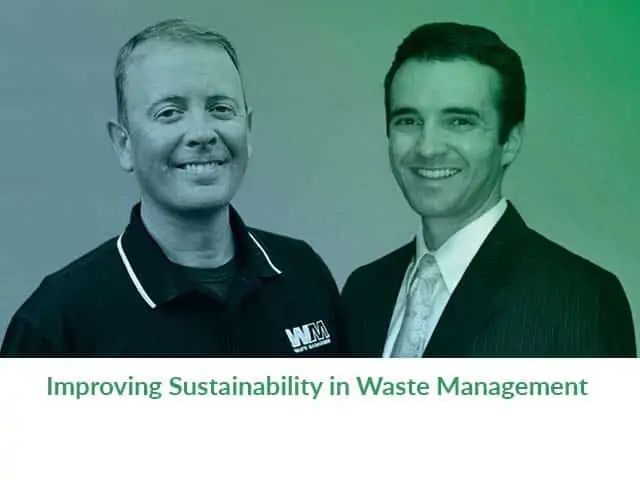
Dave and Dennis discuss how operational improvements are being made in this essential service and its environmental footprint. They dive into the 24/7 maintenance and monitoring of landfills, adjusting to changing conditions in real-time, reducing cost, generating renewable energy, improving the health and safety of operators, and being proactive in a changing world. We also hear about an Ignition-based solution called Connected Landfills that improves connectivity, mobility, and visualization by using data science to facilitate better decisions.
Apple Podcasts | Spotify | Google Play | PodBean | TuneIn
When Melissa Russo’s boss Phil Carrillo told her he thought she should get her drone pilot license, she thought he was kidding. At the time, she worked on SCS’s Remote Control (RMC) team; selling drone services was a part of her job, but she had not thought of flying these unmanned vehicles herself.
Her thirst for competition kicked in when he turned the proposition into a bet. He was going after his pilot license himself; she bet she’d beat his score. They finished in a dead heat, but what started as friendly rivalry ended up bringing a new dimension to Russo’s job— a job that continues to expand in breadth as new opportunities turn up.
Today she not only flies, sells drone services, and teaches others how to sell and fly, but she’s helped bring geographical information systems (GIS) into RMC’s portfolio. How these technologies fit together is RMC remotely collects data from drones and different landfill systems. Then the GIS translates that data into maps, capturing a visual picture of how clients’ facilities’ systems are performing. The GIS piece is one of the latest chapters in the story of Russo’s evolving role (more to come on that).
Piloting is what especially gets her juices going.

“I love working with my team, supporting them in what they do. But when it comes to drones, I like the hands-on experience of flying myself more than telling other people how to do it.”
She controls these small aircraft from a device on the ground, sharply focused on her surroundings while keeping the drone in her sight at all times.
“You have to make sure there are no manned vehicles around; they have the right of way. And there’s a lot of continuous movement on landfills. You’re constantly aware of your surroundings. Is a truck coming? Am I in line with where dumping is going on?”
Flying drones takes muscle and mechanical aptitude.
The drone and case can weigh 45 pounds. And there are a lot of moving parts to assemble and calibrate.
Sometimes it’s manual work, pointing and rotating a remote controller to send a radio signal to tell the drone what to do. But more often, she pilots automated flights that she maps in advance and uploads the flight path specs into software that interfaces with the drone.
“When I’m flying drones, I can access areas where if I had boots on the ground, I couldn’t. I can go and explore just about anywhere, similar to when I dream— only it’s real,” she says.
With any task, she’s laser-focused, concentrating on one part of the picture at a time to grasp the details. She steps back and uses critical thinking, accumulated knowledge, and imagination to take on what’s before her.
The innovation process
“We’re pretty lucky with our timing; new and proven technologies are emerging quickly. I’m one of many SCSers with a deep knowledge of technology and practical experience in the solid waste industry. Together, we can make a difference because we understand the business and operational challenges very well. When I need an expert in another industry, I just reach out to a colleague. The learning process never ends, and each project helps me and my team constantly find better answers.
“My boss is more of a big-picture person; his ideas are huge and amazing. He comes to me with new ideas, and I figure out how to make them work and implement them,” Russo says.
She points to his idea to use proven GIS technology within RMC. She was already using GIS to map methane data, process topographic maps, and stockpile calculations. For instance, she integrates methane values into the GIS and overlaps them with imagery so her clients can zoom in on one well or get a large-scale view of the overall health of the gas collection system. But integrating GIS in new ways to incorporate multiple landfill systems would solve some expensive problems and, better yet, prevent even more expensive mitigation and repairs.
Expanding GIS applications to illustrate multiple landfill systems
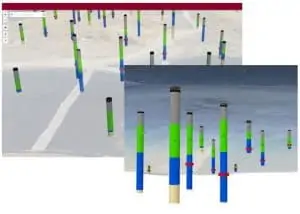
“I know drones and how to process drone data. But now that we are expanding applications, I add more layers of landfill data, such as liquids, soil, the gas collection and control system (GCCS), SCADA, and surface emissions, to bring them into the RMC GIS platform. My colleagues are demonstrating these technologies at the SCS June Client Webinar.”
“I created a team of hand-picked SCS staff with both GIS and waste management backgrounds (and a whole lot of drive) to make the vision come to life,” she says. “That’s how we innovate, tight teams with access to nationwide expertise.”
Within six months of the project’s genesis, Russo and her team had integrated gas and liquid collection systems, other landfill systems, and asset management into the RMC GIS platform. She and her team now sell these applications nationwide.
Russo’s come a long way since joining SCS at age 21
In her mind, she grew up at the company. Before coming on board, she managed a shop in Manhattan Beach, California, while she began thinking about what to do next.
“I learned a lot about business and people. It was a stepping-stone – I discovered how to earn trust, build rapport, and sell. But in time, I decided I wanted a more professional job,” she recalls.
She went to work for a real estate company managing the SCS Engineers Long Beach office, where she would soon take an entry-level Accounts Payable position in SCS Field Services.
In time, she transitioned to the Health and Safety group, assisting in creating training material and managing truck fleets. Soon she was managing assets, among other firsts for her. By this point, she had developed enough software, accounting, and other administrative skills to step up fast.
Part of the job was keeping up with vehicle maintenance, so she often spoke with field staff. Many of them she already knew from her days working in the accounting department.
Growing with her SCS colleagues
“When I was in my first administrative roles, I supported many colleagues who were field techs or supervisors; they are project managers now. It feels as though we’ve grown up together, and we know and trust each other. We collaborate well and know that when we bring projects to each other that we will take care of each other,” Russo says.
She especially likes the RMC concept because remote control and automation enable her, her clients, and her team to work smarter, not harder because they leverage the technology to work for them.
“That means we can usually work from anywhere, giving all of us more time for family, friends, or allocating the time saved towards other needed to-dos. I’m up at five a.m. and, at times, may not finish work until nine at night. Somehow, us working women find the balance in between meetings, writing proposals, and answering emails; I have lunch with my two boys or take them to a park,” she says.
Bambi Lance, a veteran SCSer and her mother, works in the same business unit as Melissa does. “Mom’s been here for 16 years, and it’s interesting to have her perspective not only as my mom but as someone who knows SCS. She knows my department, and she knows me. She sees what I am doing and she along with management encourage me to do more and believe in myself.”
Russo reflects again on the concept of stepping-stones on the way to knowledge and maturity. I’m competitive and take on challenges, which has been a driving force in all I do today. It’s helped me take a personal inventory of how I am now versus the young Melissa,” she says.
She uses it to gauge her direction. And she uses it to connect to her staff. “I try to help them see you can turn almost any experience, into a positive. I want my team to see we are all learning and growing. They can, as I can, comfortably bring new ideas to the group and company, which often turn into new ways to help clients.”
She circles back to her decision to fly drones, explaining how it aligns with her career path from her first steps to today. “Becoming a pilot was a natural fit because it’s a new challenge. The craving to take on new tasks is how I grew from an accounting administrator to a project coordinator up to a business manager. It’s wanting to expand my knowledge, tackle new feats, and accomplish what I was not sure I could do. I like the challenge.”
The SCS Culture is Driven by Client Success